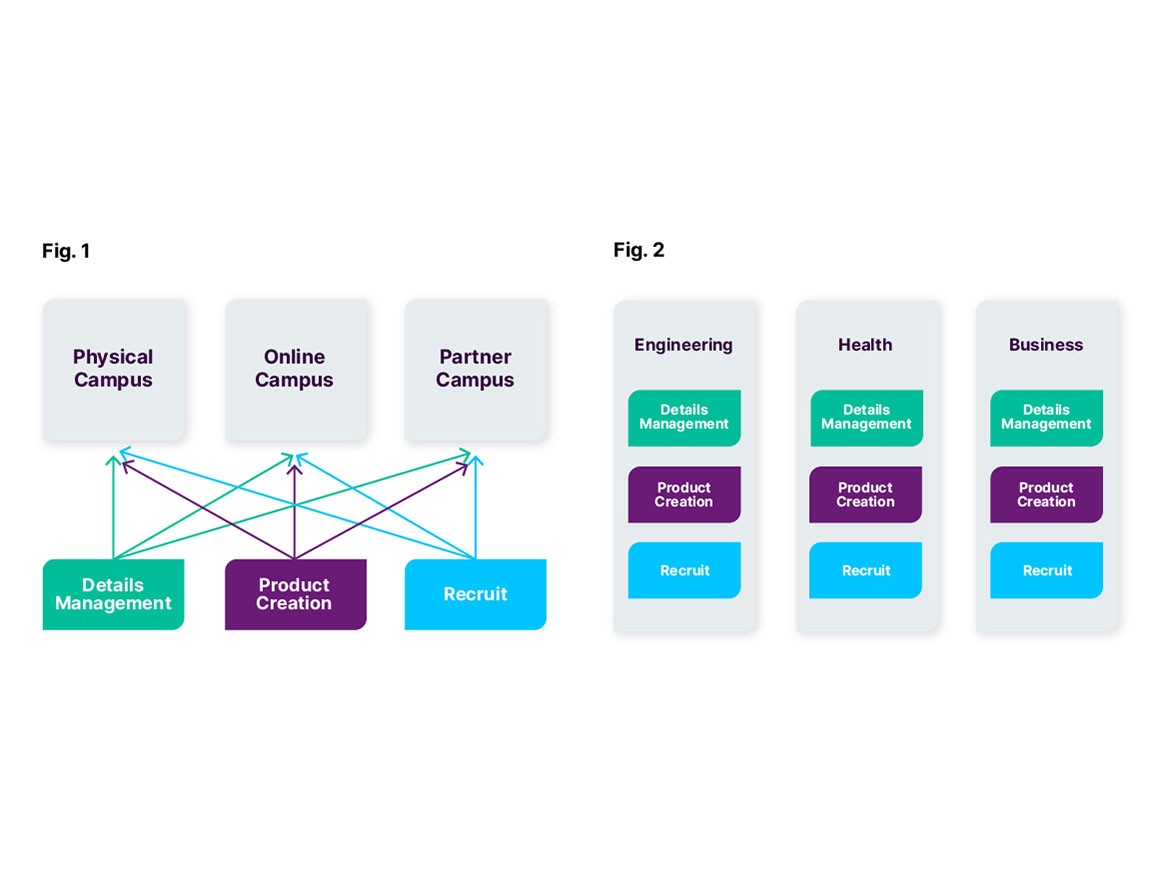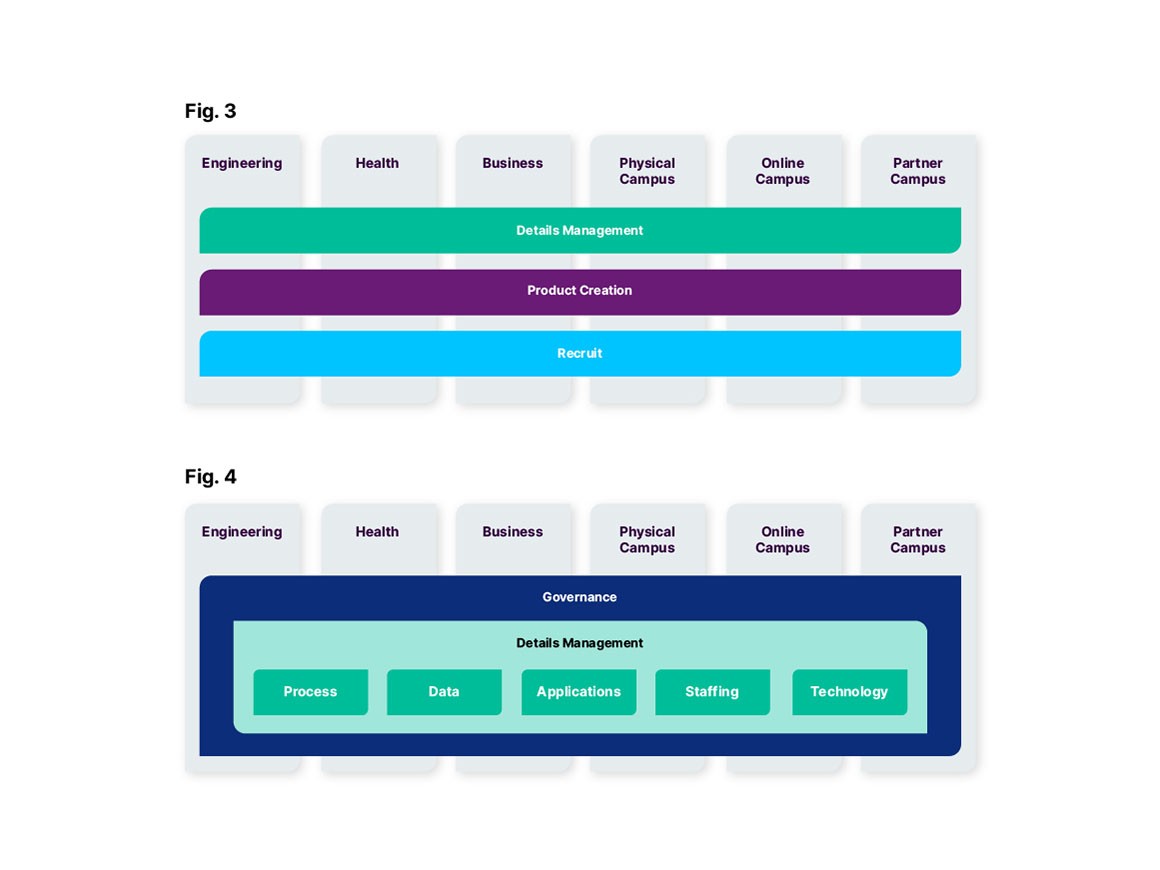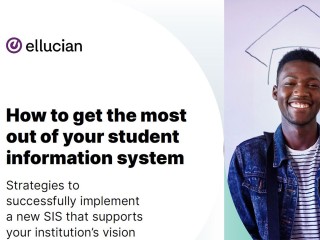Why institutional success relies on your digital strategy

Why institutional success is increasingly reliant on your digital strategy
Before I discuss the importance of aligning your university’s digital infrastructure with both its organisational goals and its operational model, I want to acknowledge that the information presented below is nothing new to the higher education industry. What is new, however, is the increasing understanding that institutional success relies on your digital strategy.
Although we have operated solely in the higher education market for several decades, the world never stops changing, which is why Ellucian continually monitors the strategic and operating nature of universities. Lately, the operating environment has become more competitive.
Universities have diversified and become more complex, the regulatory landscape is constantly changing and the use of enterprise software, which underpins all admin functions within a University, has also moved on at pace, with the journey from on-premise to cloud, and now, to SaaS. Recent research published by Gartner describes organisation leaders’ increasing use of ‘business composability,’ a phrase that describes a means to structure and restructure to continue to deliver and achieve results in face of disruption in a volatile world.
Ellucian has moved with the changes and embraced the need for functions such as Enterprise Architecture (EA) to be part of a soft skills toolset that considers sector changes and how this impacts our solutions and engagements.
Over the last three years, our EAs have developed an approach to our consultancy and project work based on a standardised HE Capability Model, which has involved undertaking strategy assessment activities with clients in Australia, North America, Ireland, the UK and globally. Through this work, we have identified the same four, high-level strategic goals:
- The need to be better placed to react to market conditions
- The need to be data driven
- The need to maximise user experience
- The need to reduce costs/maximise resources
As I said nothing surprising there!
As always, the key is to identify, improve and manage the crucial elements required to deliver these goals. Here, almost without exception, the initial fundamental underpinning requirement is the deployment and regulation of a standardised, repeatable operating model. However, there is an issue.
The issue: An unstructured operating model
I have previously written at length on how universities, as businesses, have expanded over the last two decades, yet the supporting operations have developed more organically. We regularly see the emergence of an evolved support function, where challenges have been solved by the need to meet immediate issues or ad hoc operational requirements, usually resulting in developing workarounds rather than solving the core issue. This leads to an uncontrolled, unstructured operating model, where roles and responsibilities are confused, the role of technology is blurred and best practices are never adopted or rarely evolved.
To move forward, universities need to understand how this has occurred, how it can be resolved and how it can be protected through governance in the future. If we look at modern effective businesses across all sectors, they have successfully balanced the need to be capability enabled while being product focused. As enterprises, universities are typically structured around products i.e., engineering qualifications, health qualifications and business qualifications, which is why we end up with faculties and schools.
In my opinion, consciously or not, supporting functions remain aligned to this type of structure. Already I hear the shouts of “Rubbish, we’ve standardised admin business functions!”—I’ll come back to this point.
The issue of an uncontrolled operating model becomes exasperated when functions such as the International Office, postgraduate learning and research are added into the mix, as well as campus variations, partnerships, online delivery and mobile because this set-up facilitates a siloed mentality where each element of the business acts as its own entity. At best, this can lead to high levels of application customisation (Fig.1) or at worst, a range of solutions that perform much of the same, or overlapping/underutilised functionality (Fig.2).

In either scenario, the key goals that the business is looking to achieve, as highlighted previously, become difficult or even impossible.
This has been facilitated by two decades of technical advancement that has made both new solution entrants quick to appear while established technology has become more flexible and easier to integrate allowing any desired business and technical configuration to be supported. Because of this, we have often asked “what can we do?” rather than “what should we do?”
Our investigations
Ellucian recognises this shift and has developed additional services to address it. A key service is Application Portfolio Assessment. This service reviews the set of applications required to deliver key processes within a set of defined Higher Education capabilities like curriculum management or student recruitment.
The portfolio assessment involves looking at not just the ‘main’ solution but also those up and downstream that work together to deliver the full user journey. Once complete, we identify if this process is standardised across the institute. Wherever we have engaged in this activity the high level of solution and business duplication and variation is always a surprise.
Invariably this is called ‘application/technical debt’ and as such is often seen as an IT issue; but in nearly all circumstances the culprit lies elsewhere. Let’s be clear on this, in these cases, this complexity arose because a decision was made that a business process needed adding or amending. Then, the original process was changed, either through customisation or integrating additional solutions, and the root of the technical debt was identified. Focusing on IT application facilitates this attitude—if you think it’s a problem now, wait until you want to quickly leverage the many benefits of SaaS!
I return to the point raised earlier concerning standardised admin functions, which ultimately boils down to how you undertake processes. If exactly the same process is used across the relative parts of the organisation, then it’s standardised.
This is not the case if (using some real-world examples):
- One function uses the ‘same’ process but has made some slight changes to meet specific departmental needs
- One function uses the ‘same’ process but pulls data out to manipulate it in Excel and then feeds it back in
- One function collects the same data using a different IT application with the same functionality
- One function has a ‘copy’ of the same SharePoint based process
Variation is variation, period!
Mix and match solution
We all accept that the development, delivery and support of individual products may require specific solutions, but for the modern organisation, consistency is critical to success.
For universities, this is the case for administrative support functions such as those supplied via the Student Information System (SIS). If you’re unsure whether a new application is actually needed, ask yourself— does complexity/variation bring us a competitive advantage and/or drive-up revenue or at the very least sufficiently enhance the user experience that they would be prepared to sing our praises as a differentiator?
When we think of these elements as holistic business capabilities (Fig.3) and move away from pure IT application delivery, it allows us to focus on all the key elements needed to deliver the required capability and gives us a realistic opportunity to understand the requirements and impact of end-to-end change while facilitating overall governance (Fig.4).

Benefits of evaluating solutions based on end-to-end change
The benefits of this approach align absolutely with the key needs of universities looking to compete in the developing higher education business environment:
- Reduced business and technical complexity supporting agile change and reducing costs
- Organisational rather than siloed data
- Holistic development
- Consistent user experience
- Reduced duplication of effort
- Simplified governance structure
- Aligns with a SaaS delivery approach
A warning: Watch out for internal blockers
I started this piece by suggesting that there was ‘nothing new’ and the same needs to be said for the organisational issues that act as blockers to many fully embracing the scenario laid out above. Many of the old internal factors often called out against the sector will be blockers:
- Undefined operating model
- Lack of enterprise change management
- Lack of enterprise governance
- Lack of ownership (data, process etc.)
- Uncontrolled procurement
But the encouraging sign is that, without exception, every university that we have spoken to over the last three years has both identified the need to move to a unified operating model and called out the actions it will need to take as well as identifying the short term pains, and is setting in motion plans to address these holistically—now that is something new!
Discover how adopting a standardised capability approach to SIS-related functions can lead to a templated 12-month deployment here.




